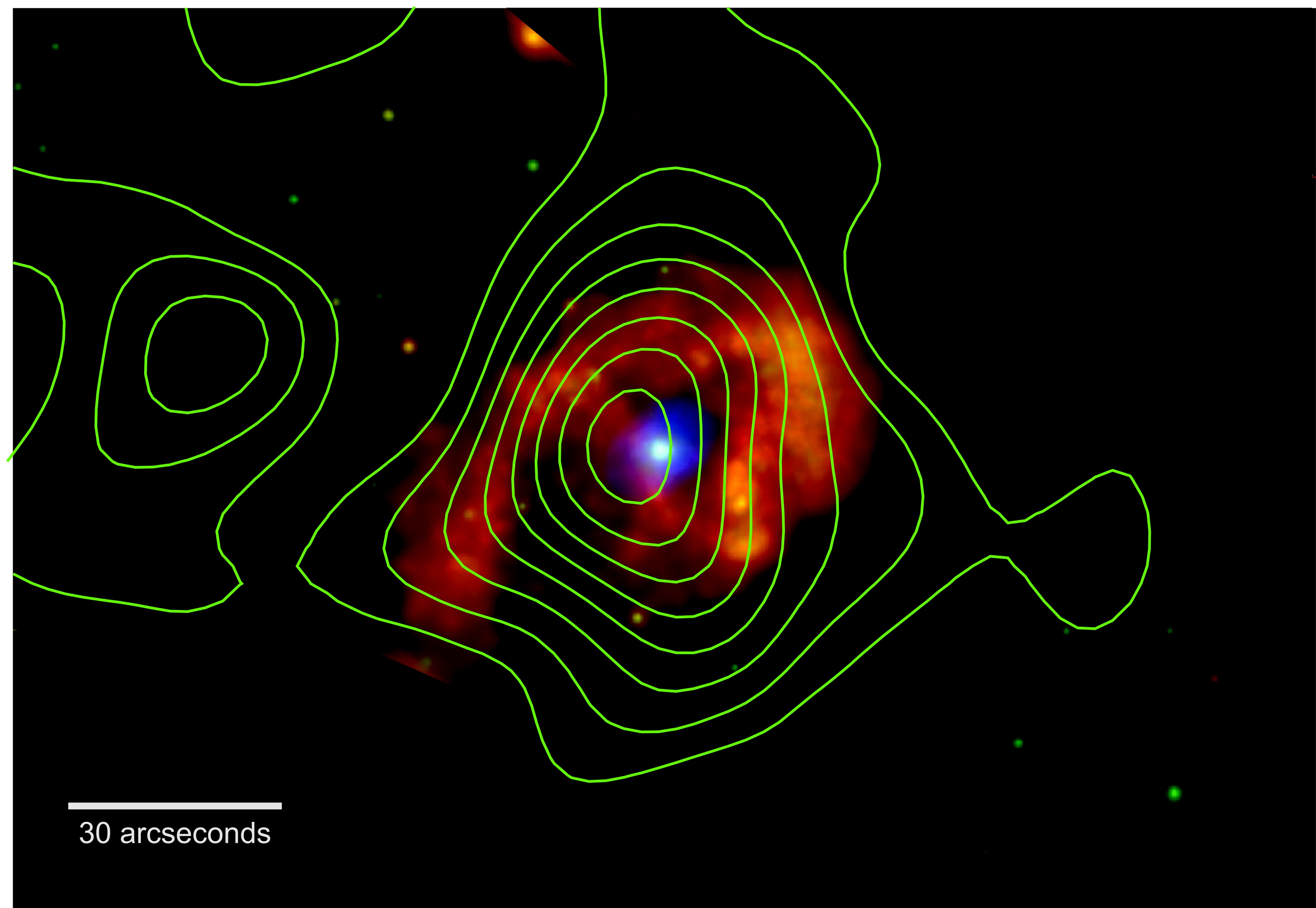'Superstar' Eta Carinae Acts Like a Ginormous Cosmic-Ray Gun, But Why?
A huge star system 7,500 light-years away is shooting out radiation at superhigh speeds. A new study with NASA's NuSTAR space telescope shows that Eta Carinae may act as an accelerator of charged particles, which are also called cosmic rays.
Eta Carinae is a famous hourglass-shaped gas cloud containing two massive stars orbiting each other: They are 30 and 90 times the mass of the sun, respectively. The system experienced an outburst in the 19th century and briefly became the second-brightest object in the sky. Astronomers, however, still struggle to understand the source of the outburst — and the dynamics of that star system in general.
"We know the blast waves of exploded stars can accelerate cosmic ray particles to speeds comparable to that of light, an incredible energy boost," lead author Kenji Hamaguchi, an astrophysicist at NASA's Goddard Space Flight Center in Maryland, said in a statement from NASA. "Similar processes must occur in other extreme environments. Our analysis indicates Eta Carinae is one of them." [Eta Carinae: An Explosive Star System in HD Images]
Cosmic rays are highly energetic particles — such as electrons, protons and atomic nuclei — that come from outside the solar system. Astronomers aren't sure where cosmic rays come from, researchers said in the statement, because these particles carry a charge. This means the particles' paths through space alter and scramble whenever the particles meet a magnetic field.
However, fluctuations in Eta Carinae's radiation output showed that something interesting was happening in that system, leading researchers to suspect it could be one of these elusive cosmic-ray sources.
"Both of Eta Carinae's stars drive powerful outflows called stellar winds," said team member Michael Corcoran, a senior research scientist at Goddard. He said where the winds intersect, there are periodic changes in "soft" or low-energy X-rays. These changes have been observed for two decades.
NASA's Fermi Gamma-ray Space Telescope also saw changes in gamma-rays (a more energetic form of radiation than X-rays) in the direction of Eta Carinae. However, Fermi is a little more myopic than X-ray telescopes, making it difficult to figure out if the gamma-rays were coming from Eta Carinae.
Breaking space news, the latest updates on rocket launches, skywatching events and more!
So NuSTAR took a look. The team used archival data (as well as new observations) from NuSTAR between March 2014 and June 2016. During the same time period, team members also collected lower-energy X-ray observations from the European Space Agency's XMM-Newton satellite.
NuSTAR can examine high-energy X-rays that are emitting radiation above 30,000 electron volts (eV); visible light, by contrast, only has an energy level of about 2 eV to 3 eV. The telescope's observations showed that the variations in these "hard" X-rays have a similar pattern to the gamma-ray fluctuations that the Fermi telescope observed.
"The researchers say that the best explanation for both the hard X-ray and the gamma-ray emission is electrons accelerated in violent shock waves along the boundary of the colliding stellar winds," NASA officials said. "The X-rays detected by NuSTAR and the gamma rays detected by Fermi arise from starlight given a huge energy boost by interactions with these electrons."
NASA added that some of these superfast electrons, as well as other charged particles, likely escape Eta Carinae. Some of those particles may fly in Earth's direction, showing up here as cosmic-ray detections.
The new work was detailed July 2 in the journal Nature Astronomy.
Follow us @Spacedotcom, Facebook and Google+. Original article on Space.com.

Elizabeth Howell (she/her), Ph.D., was a staff writer in the spaceflight channel between 2022 and 2024 specializing in Canadian space news. She was contributing writer for Space.com for 10 years from 2012 to 2024. Elizabeth's reporting includes multiple exclusives with the White House, leading world coverage about a lost-and-found space tomato on the International Space Station, witnessing five human spaceflight launches on two continents, flying parabolic, working inside a spacesuit, and participating in a simulated Mars mission. Her latest book, "Why Am I Taller?" (ECW Press, 2022) is co-written with astronaut Dave Williams.


